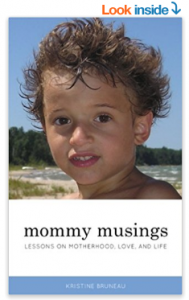We tell stories over a cup of coffee. We share our dreams, reminisce over places we’ve been, and yearn to be again. We console each other, seek to understand, find common ground, and solve parenting conundrums.
My son’s university recently identified him as a close contact of a recent positive case of COVID-19. Per protocol, he would leave campus and complete the mandatory 10-day quarantine from a hotel room. He texted my husband:
“Take me home?”
Over a cup of coffee, R and I discussed whether or not to save our son from isolation while risking our health. The alternative? Allow him to complete his compulsory sentence, which would bind him to additional protocols that could lengthen his isolation. The media frenzy over COVID-19 also had me on edge. News reports ranged from how we can prevent getting infected to conspiracy theories, new strains, and weird symptoms like hiccups.
We decided to take our chances. COVID dragon be damned.
Did you know? The faintest scent of coffee is enough to awaken our minds to the details and emotions linked to the aroma of coffee. Ah, coffee! By its very nature, coffee’s aroma is an indescribable, compelling trail of scent that gets you out of bed in the morning and has you lingering in the cafés of a place traveled long ago. This “scent-sational” effect is called olfactory memory, and it’s how we associate fragrances to memories, thoughts, and emotions.
Curious. How something so simple is so complicated to describe accurately. I smell a cup of coffee. Nutty? Chocolatey? Fruity? Citrusy? Or do I detect a hint of caramel? My mind struggles with this vortex of scent. Coffee is a complex blend of more than 1,000 chemical compounds, with about 30 contributing to its aroma. Maintaining constant water temperature during brewing is essential to achieve the sweet spot of taste and smell. As water passes through the coffee grounds, it extracts the compounds responsible for aroma – acids to sugar and then alkaloids. Timing is everything.
Timing is everything.
A winter storm delayed our plans. R couldn’t leave until the roads were cleared and well-salted. Over coffee, we tracked weather and road conditions on our phones. Two days later, R drove on caffeine and adrenaline from Rochester to Newport to Rochester. On the way home, the school sent a notice: Shelter in place for two weeks. More kids had tested positive in a few days following a superspreader.
The next morning, over coffee, R and I wondered: Did our son have COVID? His symptoms were mostly congestion and sneezing. No fever. No headache. No loss of taste or smell. According to evidence that most people who get COVID-19 will only get mildly sick, the uncertainty of who is at grave risk amplifies the pandemic’s terror.
Understanding how variables, including grind size, brewing time, and water temperature, affect coffee aromatics and tase can impact a cup of coffee.
What science doesn’t tell us about coffee and COVID, the heart explains.
As a parent, I can show my son the way, how to respond to problems, soften in the face of suffering, and find joy in life’s small moments. Like brewing a good cup of coffee, there are techniques to learn and clues to decode.
Ultimately, we all must rid ourselves of our fears, such as getting ill, being separated from those we love, feeling lonely, and death.
I prefer a lightly roasted coffee with intricate flavor notes best accentuated with a pour-over brew method. The prolonged engagement of this practice is worth my time – as well as savoring a good cup of coffee with the people I love. Because there’s nothing, a good cup of coffee can’t fix.
P.S. Enjoy coffee? Click to Joe Bean and explore their award-winning, seasonal coffee and perpetual joy subscription. (You can get 50% off your first bag.) I’ve been subscribing to Joe Bean’s Perpetual Joy since 2015 and highly recommend it.


 Haikus in a pandemic
Haikus in a pandemic

Loved this! So glad you’re all okay.
Great piece Kris!